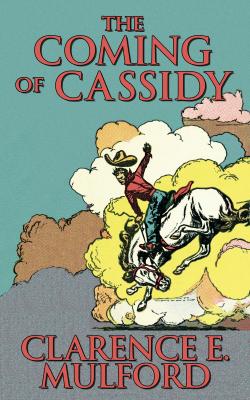ТОП просматриваемых книг сайта:
Coming of Cassidy, The The. Clarence E. Mulford
Читать онлайн.Название Coming of Cassidy, The The
Год выпуска 0
isbn 9781974998159
Автор произведения Clarence E. Mulford
Жанр Классическая проза
Издательство Ingram
THE COMING OF CASSIDY
AND THE OTHERS
By
CLARENCE E. MULFORD
This edition published by Dreamscape Media LLC, 2018
www.dreamscapeab.com * [email protected]
1417 Timberwolf Drive, Holland, OH 43528
877.983.7326
About Clarence E. Mulford:
Clarence Edward Mulford (3 February 1883–10 May 1956) was the creator of the character Hopalong Cassidy and who wrote many works of fiction and nonfiction.
Mulford was born in Streator, Illinois. He created Hopalong Cassidy in 1904 while living in Fryeburg, Maine, and the many short stories and 28 novels were adapted to radio, feature film, television, and comic books, often deviating significantly from the original stories, especially in the character's traits. While many of his stories depicted Cassidy and other men of the Bar-20 ranch, he also wrote novels (and short stories) of other Westerners, starting with Johnny Nelson in 1920. He also wrote nonfiction, mostly about the American West, the outdoors, and motoring.
More than just writing a very popular series of Westerns, Mulford recreated an entire detailed and authentic world filled with characters drawn from his extensive library research. His biographer, Francis Nevins, characterized Mulford's writing as "rooted in Victorian convention." Nevins also states that he originated the Western series that has continuous characters, and that, unlike the characters of most later Western series writers, his aged.
He died of complications from surgery in Portland, Maine. He set aside much of his money from his books for local charities.
Source: Wikipedia
TABLE OF CONTENTS
Preface
It was on one of my annual visits to the ranch that Red, whose welcome always seemed a little warmer than that of the others, finally took me back to the beginning. My friendship with the outfit did not begin until some years after the fight at Buckskin, and, while I was familiar with that affair and with the history of the outfit from that time on, I had never seemed to make much headway back of that encounter. And I must confess that if I had depended upon the rest of the outfit for enlightenment I should have learned very little of its earlier exploits. A more secretive and bashful crowd, when it came to their own achievements, would be hard to find. But Red, the big, smiling, under-foreman, at last completely thawed and during the last few weeks of my stay, told me story after story about the earlier days of the ranch and the parts played by each member of the outfit. Names that I had heard mentioned casually now meant something to me; the characters stepped out of the obscurity of the past to act their parts again. To my mind's eye came Jimmy Price, even more mischievous than Johnny Nelson; "Butch" Lynch and Charley James, who erred in judgment; the coming and going of Sammy Porter, and why "You-Bet" Somes never arrived; and others who did their best, or worst, and went their way. The tales will follow, as closely as possible, in chronological order. Between some of them the interval is short; between others, long; the less interesting stories that should fill those gaps may well be omitted.
It was in the '70s, when the buffalo were fast disappearing from the state, and the hunters were beginning to turn to other ways of earning a living, that Buck Peters stopped his wagon on the banks of Snake Creek and built himself a sod dugout in the heart of a country forbidding and full of perils. It was said that he was only the agent for an eastern syndicate that, carried away by the prospects of the cattle industry, bought a "ranch," which later was found to be entirely strange to cattle. As a matter of fact there were no cows within three hundred miles of it, and there never had been. Somehow the syndicate got in touch with Buck and sent him out to look things over and make a report to them. This he did, and in his report he stated that the "ranch" was split in two parts by about forty square miles of public land, which he recommended that he be allowed to buy according to his judgment. When everything was settled the syndicate found that they owned the west, and best, bank of an unfailing river and both banks of an unfailing creek for a distance of about thirty miles. The strip was not very wide then, but it did not need to be, for it cut off the back-lying range from water and rendered it useless to anyone but his employers. Westward there was no water to amount to anything for one hundred miles. When this had been digested thoroughly by the syndicate it caused Buck's next pay check to be twice the size of the first.
He managed to live through the winter, and the following spring a herd of about two thousand or more poor cattle was delivered to him, and he noticed at once that fully half of them were unbranded; but mavericks were cows, and in those days it was not questionable to brand them. Persuading two members of the drive outfit to work for him he settled down to face the work and perils of ranching in a wild country. One of these two men, George Travis, did not work long; the other was the man who told me these tales. Red went back with the drive outfit, but in Buck's wagon, to return in four weeks with it heaped full of necessities, and to find that troubles already had begun. Buck's trust was not misplaced. It was during Red's absence that Bill Cassidy, later to be known by a more descriptive name, appeared upon the scene and played his cards.
C. E. M.

